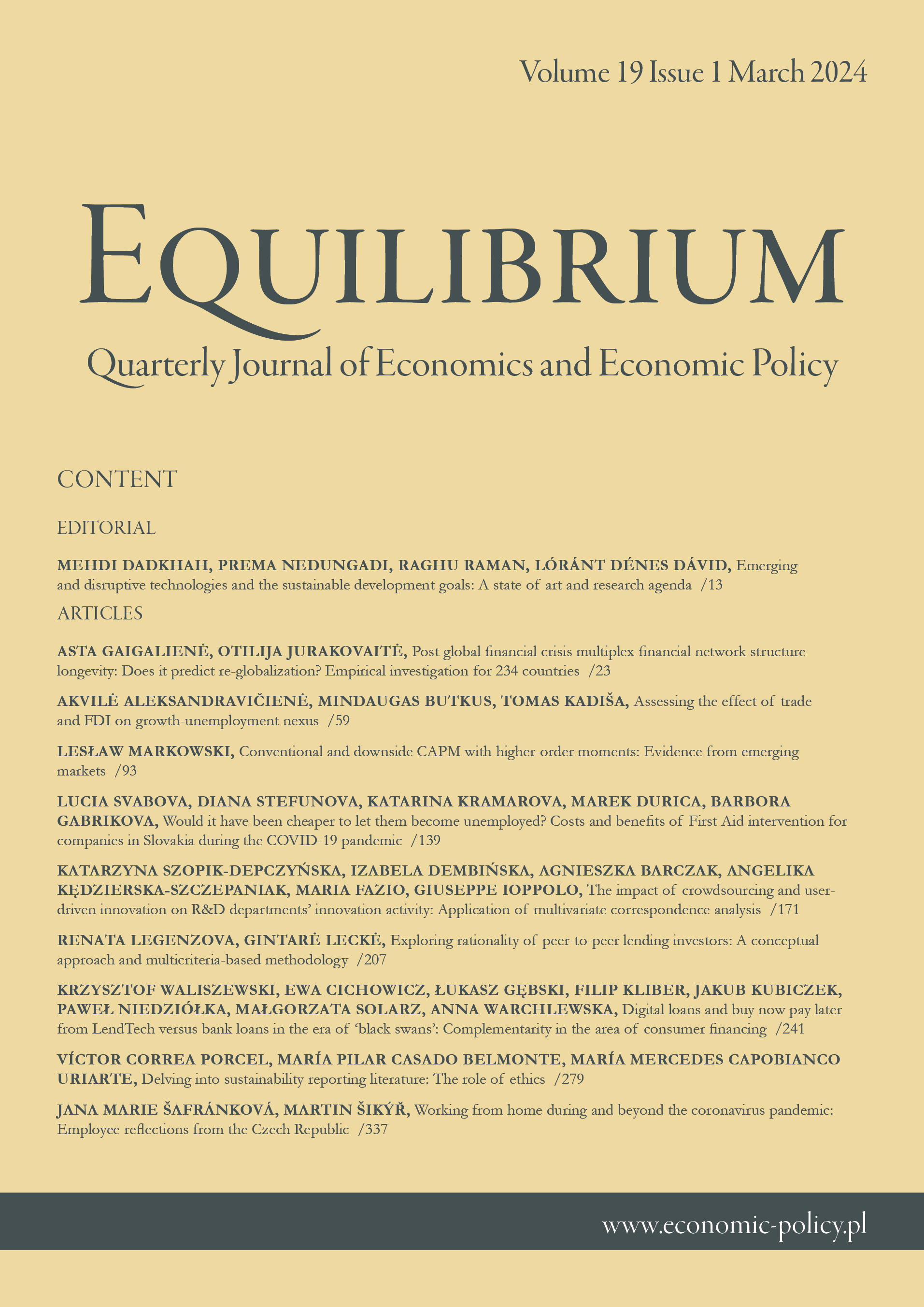Estimating the parameter of inequality aversion on the basis of a parametric distribution of incomes
IF 5
Q1 ECONOMICS
Equilibrium-Quarterly Journal of Economics and Economic Policy
Pub Date : 2020-09-07
DOI:10.24136/eq.2020.018
引用次数: 3
Abstract
Research background: In applied welfare economics, the constant relative inequality aversion function is routinely used as the model of a social decisionmaker?s or a society?s preferences over income distributions. This function is entirely determined by the parameter, ?, of inequality aversion. However, there is no authoritative answer to the question of what the range of ? an analyst should select for empirical work. Purpose of the article: The aim of this paper is elaborating the method of deriving ? from a parametric distribution of disposable incomes. Methods: We assume that households? disposable incomes obey the generalised beta distribution of the second kind GB2(a,b,p,q). We have proved that, under this assumption, the social welfare function exists if and only if ? belongs to (0,ap+1) interval. The midpoint ?mid of this interval specifies the inequality aversion of the median social-decisionmaker. Findings & Value added: The maximum likelihood estimator of ?mid has been developed. Inequality aversion for Poland 1998?2015 has been estimated. If inequality is calculated on the basis of disposable incomes, the standard inequality?development relationship might be complemented by inequality aversion. The ?augmented? inequality?development relationship reveals new phenomena; for instance, the stage of economic development might matter when assessing the impact of inequality aversion on income inequality.基于收入参数分布的不平等厌恶参数估计
研究背景:在应用福利经济学中,常相对不平等厌恶函数经常被用作社会决策者的模型?还是社会?对收入分配的偏好。该函数完全由参数?决定?,厌恶不平等。然而,对于这个范围是多少的问题,目前还没有权威的答案?分析师应该选择实证工作。文章的目的:本文的目的是阐述推导?可支配收入的参数分布。方法:我们假设家庭?可支配收入服从第二类GB2(a,b,p,q)的广义贝塔分布。我们已经证明,在这个假设下,社会福利函数存在当且仅当?属于(0,ap+1)区间。中点?这个区间的中间值指定了中间社会决策者对不平等的厌恶。发现和增值:的最大似然估计?mid已经开发出来。1998年波兰对不平等的厌恶?预计2015年。如果不平等是根据可支配收入来计算的,那么标准的不平等是什么?发展关系可能得到对不平等厌恶的补充。这个增强?不平等发展关系揭示新现象;例如,在评估厌恶不平等对收入不平等的影响时,经济发展阶段可能很重要。
本文章由计算机程序翻译,如有差异,请以英文原文为准。
求助全文
约1分钟内获得全文
求助全文
来源期刊
CiteScore
9.20
自引率
3.50%
发文量
28
审稿时长
36 weeks
期刊介绍:
Equilibrium. Quarterly Journal of Economics and Economic Policy is a scientific journal dedicated to economics, which is the result of close cooperation between the Instytut Badań Gospodarczych/Institute of Economic Research (Poland) and Polish Economic Society and leading European universities. The journal constitutes a platform for exchange of views of the scientific community, as well as reflects the current status and trends of world science and economy.
The journal especially welcome empirical articles making use of quantitative methods in: Macroeconomics and Monetary Economics, International Economics, Financial Economics and Banking, Public Economics, Business Economics, Labor and Demographic Economics, Economic Development, and Technological Change, and Growth.
Current most preferable topics and special issues:
The economics of artificial intelligence: business potentials and risks;
Digitalization and entrepreneurship in economics;
Sustainable socio-economic development, environmental and ecological economics;
Transition in the energy market (improving energy efficiency, alternative energy sources, renewable energy, energy security).

 求助内容:
求助内容: 应助结果提醒方式:
应助结果提醒方式:


